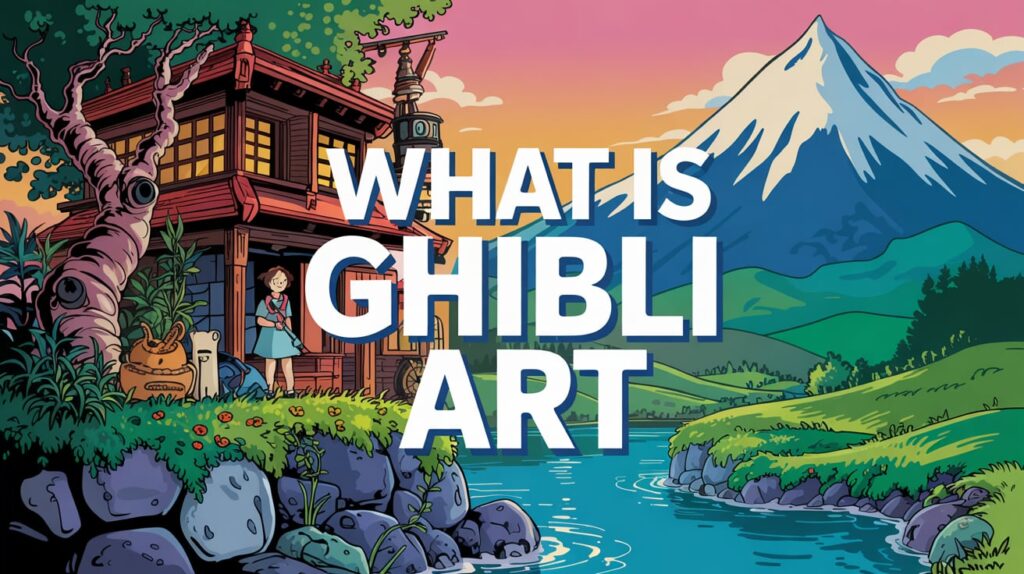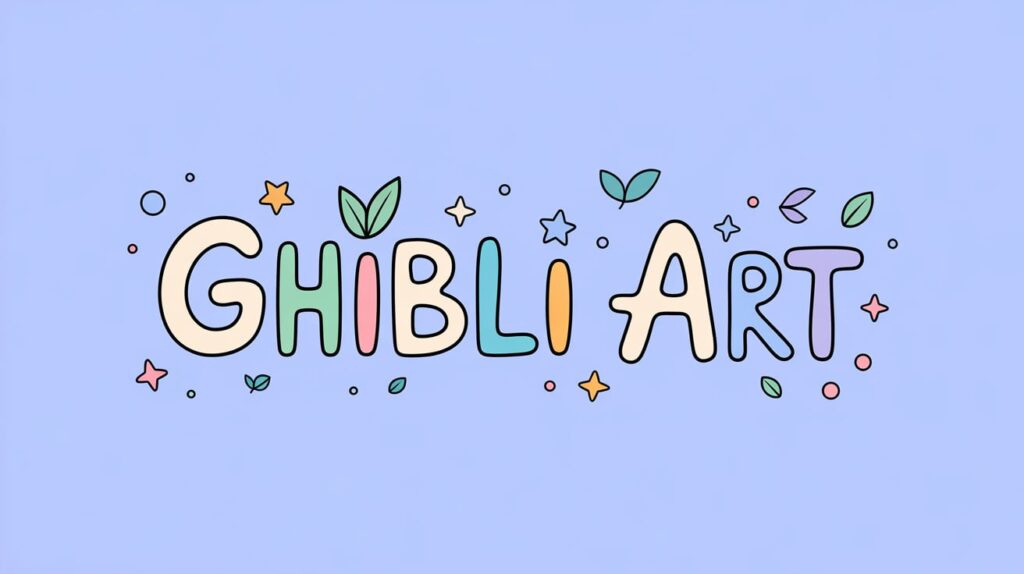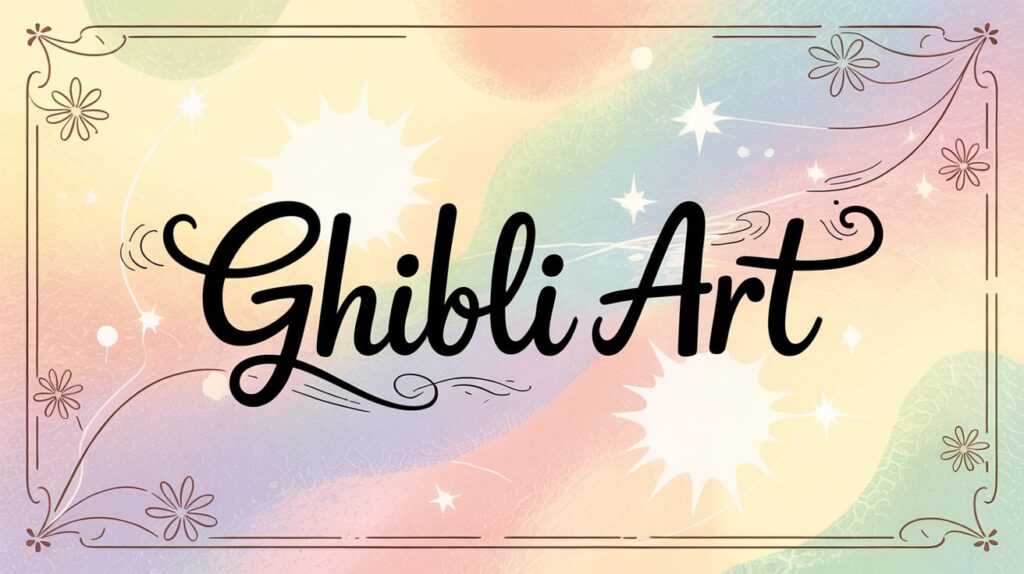Studio Ghibli, the legendary Japanese animation studio founded by Hayao Miyazaki, has enchanted audiences for decades with films like Spirited Away, My Neighbor Totoro, and Princess Mononoke. Beyond storytelling, Ghibli movies are celebrated for their breathtaking art style—whimsical, hand-drawn, and full of life.
If you’ve ever wondered, “What makes Ghibli art so special?” or “How can I draw in the Ghibli style?”, this guide will break it down. We’ll explore:
✅ What defines Ghibli’s art style?
✅ Key elements of Ghibli illustrations
✅ Step-by-step tutorial to create Ghibli-style art
✅ Tools & tips for beginners

What Is Ghibli Art? The Signature Studio Ghibli Aesthetic
Ghibli art is hand-drawn, painterly, and deeply immersive, blending realism with fantasy. Unlike most modern animation (which relies on 3D or digital shortcuts), Studio Ghibli films are crafted with traditional animation techniques, giving them a timeless, organic feel.
Key Characteristics of Ghibli Art:
- Soft, Watercolor-Like Textures
- Ghibli backgrounds often resemble impressionist paintings, with soft gradients and delicate brushstrokes.
- Example: The lush forests in Princess Mononoke or the floating islands in Castle in the Sky.
- Expressive, Simple Character Designs
- Faces are minimalist but full of emotion (big eyes, small mouths).
- Example: Chihiro’s expressions in Spirited Away.
- Attention to Natural Details
- Ghibli artists obsess over realistic movement (wind in grass, flowing water, drifting clouds).
- Example: The way dust motes float in sunlight in My Neighbor Totoro.
- Whimsical Yet Believable Worlds
- Even fantasy settings feel lived-in and tangible (no overly cartoony physics).
- Example: The bathhouse in Spirited Away feels like a real place.
- Nostalgic, Earthy Color Palettes
- Ghibli films avoid neon colors—instead, they use muted greens, blues, and browns for a natural look.
ALSO CHECK: A Simple Explanation of the Stock Market: How It Works & Why It Matters
How to Draw Ghibli-Style Art: A Step-by-Step Tutorial
Want to create your own Ghibli-inspired artwork? Follow these steps!
Step 1: Study Ghibli’s Art Style
- Watch Ghibli films and pause on scenic frames.
- Observe:
- AHow light reflects on surfaces.
- How characters’ hair and clothes move.
- How backgrounds have depth (foreground, midground, background).

Step 2: Sketch Your Composition
- Start with loose, flowing lines (Ghibli art avoids rigid shapes).
- Use real-world references (e.g., if drawing a forest, look at real trees).
Step 3: Paint with Soft, Blended Colors
- Use watercolor or digital brushes that mimic paint.
- Avoid hard edges—Ghibli art looks dreamy and blended.
Step 4: Add Atmospheric Effects
- Ghibli scenes often have:
- Sunlight rays breaking through clouds.
- Fog or mist in the distance.
- Subtle shadows (no harsh outlines).
Step 5: Final Touches (Bring It to Life!)
- Add small details:
- Flying birds in the sky.
- Dust particles in sunlight.
- Gentle movement (swaying grass, flowing water).
Best Tools for Creating Ghibli Art
Traditional (Hand-Drawn) Approach:
- Watercolors (for soft backgrounds).
- Colored pencils (for fine details).
- Gouache (for opaque highlights).
Digital Approach:
- Procreate, Photoshop, or Clip Studio Paint.
- Custom brushes that mimic watercolor/gouache.
- Texture overlays (paper grain, paint smudges).
5 Tips to Make Your Art Look More “Ghibli”
- Draw from Life – Ghibli artists use real-world references (e.g., European villages for Howl’s Moving Castle).
- Avoid Perfect Symmetry – Nature is imperfect; let your lines feel organic.
- Use Layered Lighting – Sunlight in Ghibli films often has multiple color tones.
- Focus on Small Details – A single falling leaf can make a scene magical.
- Watch Ghibli Documentaries – The Kingdom of Dreams and Madness shows their process.
Famous Ghibli Artists to Study
- Hayao Miyazaki – Master of fantasy worlds.
- Katsuya Kondō – Known for expressive character designs.
- Kazuo Oga – Legendary background artist (My Neighbor Totoro’s forests).

Final Thoughts: Why Ghibli Art Stands the Test of Time
Ghibli’s art style remains iconic because it prioritizes emotion and craftsmanship over flashy effects. By focusing on nature, nostalgia, and storytelling, Studio Ghibli creates worlds that feel alive.
Want to Try Making Ghibli Art?
- Start with simple sketches (a countryside house, a flying scene).
- Experiment with soft colors.
- Most importantly—have fun! Ghibli art is about wonder and imagination.

